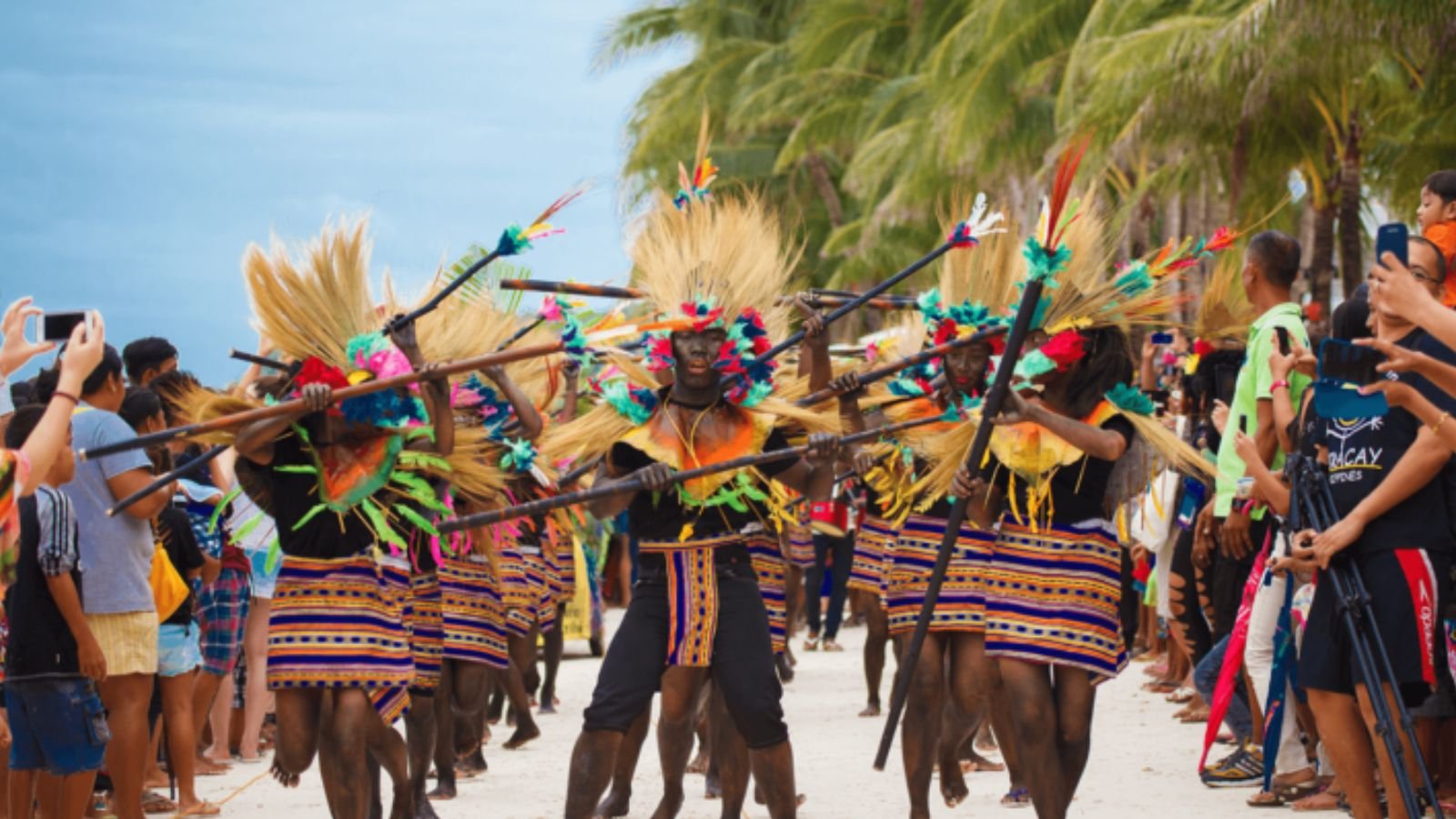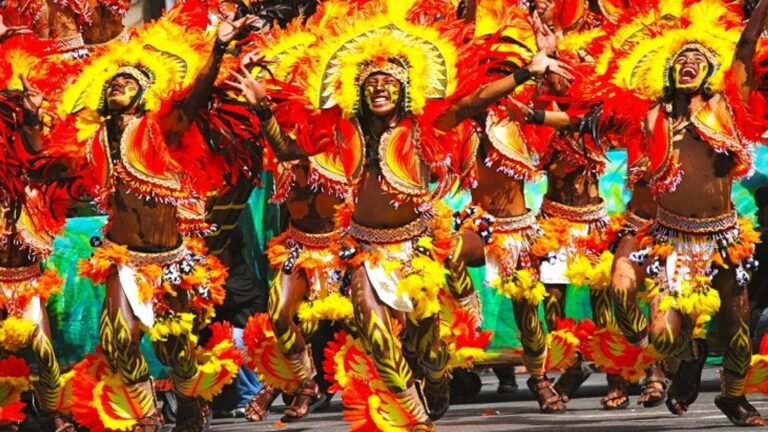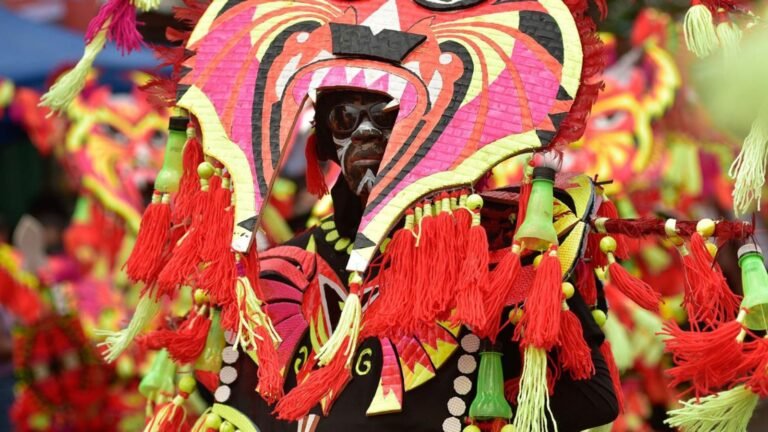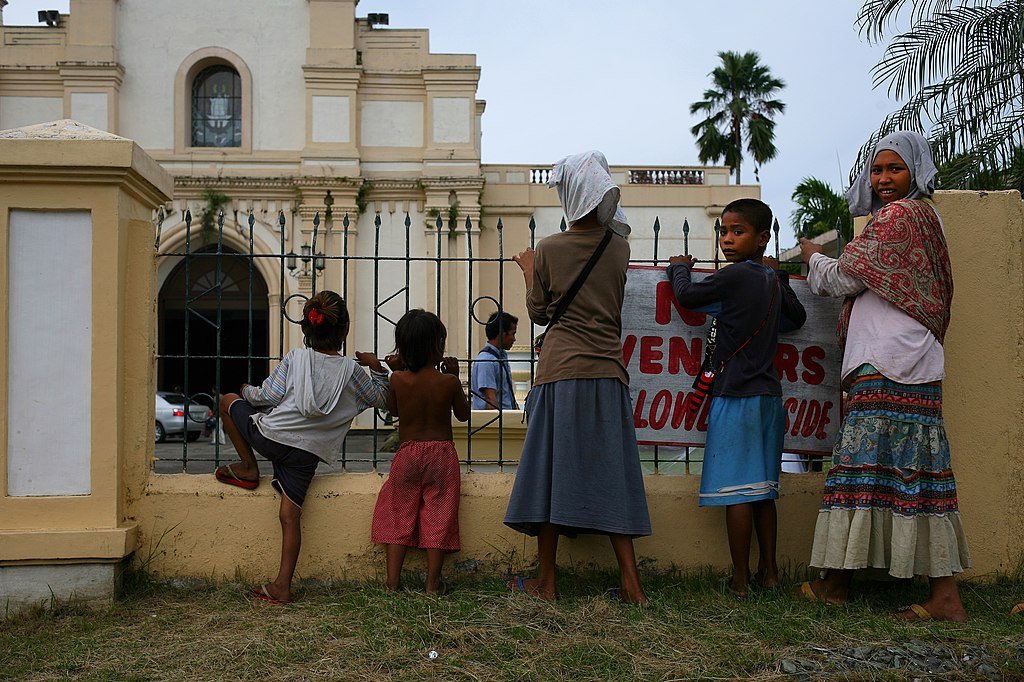Ati-Atihan: A Festival of Culture and Celebration

Published April 10, 2025
The Ati-Atihan Festival is one of the most exciting and culturally rich celebrations in the Philippines. Held every January in Kalibo, Aklan, this week-long event is a mix of history, tradition, and religious devotion—all wrapped up in energetic street dancing, pulsating drumbeats, and vibrant costumes.






One of its most recognizable features is the festival-goers covered in black paint, paying homage to the indigenous Ati people.
The Story Behind Ati-Atihan
Ati-Atihan traces its roots to the Aeta, or Ati, believed to be the first settlers of the Philippines. There are two popular versions of how the festival began, both involving Malay datus (chieftains) who fled Borneo to escape an oppressive ruler.

In one version, the datus arrived in the highlands, where the Ati people welcomed them with food and shelter. As a sign of gratitude, the datus painted themselves black and joined the Ati in their traditional dances.
The other version tells the story in reverse—this time, the datus settled in the plains, and when the Ati experienced a poor harvest, they sought help. The Malays provided them with food, and in appreciation, the Ati danced and celebrated. Over time, this tradition became an annual event.
The Festival Today
Like many Filipino traditions, the festival evolved over time, especially during Spanish colonization, when Catholicism became deeply embedded in local culture. Today, Ati-Atihan is both a cultural and religious celebration in honor of the Santo Niño (Child Jesus). Devotees parade through the streets, dancing and chanting “Hala Bira! Viva Santo Niño!”

If you ever find yourself in Kalibo during January, get ready to be swept up in the energy! Festival-goers paint their bodies black, wear elaborate headdresses, and dance alongside drumbeats that never seem to stop. It’s an exhilarating, full-on immersion into Filipino culture.
More Than Just a Festival
Ati-Atihan is more than just a wild street party—it’s a celebration of Filipino heritage, gratitude, and unity. It’s a reminder of the country’s deep-rooted traditions and the resilience of its people. Year after year, the festival continues to thrive, bringing together locals and tourists alike.
So, if you’re looking for a one-of-a-kind cultural adventure, make sure to visit Kalibo in January. Get ready to dance, celebrate, and experience the incredible spirit of Ati-Atihan!

